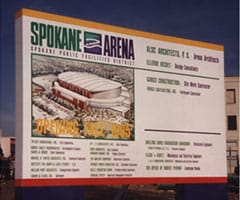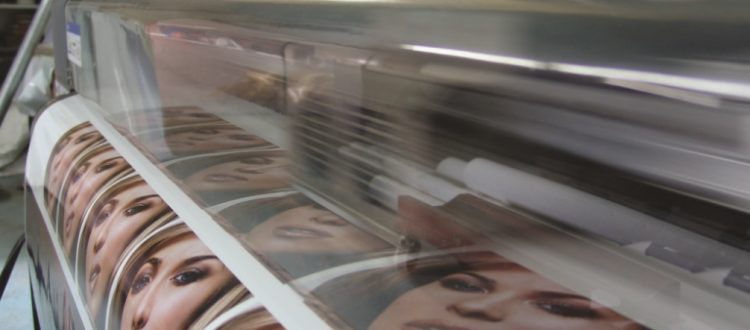It used to be that sign companies produced full color printing for only the big corporations like Coca-Cola, IBM, or Xerox (back when they were still a dominant player). This technology was expensive unless it was done in huge volume, especially when companies printed larger format advertising media such as posters or banners or the like.
With the onset of digital press in the 1990’s, however, businesses were able to offer affordable 4CP or 4-color process printing – to smaller corporations and companies. Today, most are able to offer to even Mom & Pop businesses.
What is 4CP/4-color Process?
4CP printing refers to the 4 colors of the press spectrum, also termed CMYK, which stands for Cyan/Magenta/Yellow/Black. You may also see the RGB – Red/Green/Blue – color spectrum referred to at times, but that has to do with your computer or television, not printing. If you are sending files to be printed, make sure those files are saved in the CMYK, not RGB, or you may get significant color shifting and your print may not look like what you wanted it to look like.
“Spot Color” Printing – How is This Different from 4-color Process?
 Up until the 21st century, most, unless they were hand-painted, were generally what is termed “spot color” sign. So the main identification display in front of the local Coca-Cola distributorship would be red and white, essentially a “one spot color (red) on white” signage. With 4CP press, some that screen print could create a color separation of the CMYK spectrum, and, using a pattern of dots called “half-tones,” they could create colored tones on various materials – metal, plastic, fabric, and later, vinyl.
Up until the 21st century, most, unless they were hand-painted, were generally what is termed “spot color” sign. So the main identification display in front of the local Coca-Cola distributorship would be red and white, essentially a “one spot color (red) on white” signage. With 4CP press, some that screen print could create a color separation of the CMYK spectrum, and, using a pattern of dots called “half-tones,” they could create colored tones on various materials – metal, plastic, fabric, and later, vinyl.
Although most main ID signs are still spot color, many companies are now availing themselves of one of the latest developments in main ID internally illuminated exterior displays, the coloured press of digital translucent vinyl media which can be done by numerous firms. This process involves embedding translucent adhesive vinyl on a roll-to-roll, large format digital printer, usually at around 300 dpi (dots per inch). The print is then laminated with a high quality matte or gloss laminate (gloss usually carries a longer warranty), and mounted to .114″ or .136″ thick polycarbonate sheets (also known by the brand name Lexan®).
Similar to the polycarbonate sheet displays, businesses can execute full color printing on pressure-sensitive adhesive vinyl, using a large format digital printer, then laminate the vinyl – after a 24 hour period dry time – and mount the prints to various substrates. Those utilizing this vinyl are able to adhere these prints to less expensive business ad displays on other materials like DiBond®, MDO plywood, Alumalite®, aluminum, and other substrates.
Different Uses and Applications
Various Uses Including –
- Project Signage – Typically firms print on PS vinyl, and mount it to MDO plywood or 10mm corrugated plastic, although the latter is not advisable in high wind areas.
- Product Promotion – Press on temporary signage on foam board, EPS board like Sintra or Komatex, Gatorfoam, or on banners and posters as well.
- Illuminated Signs – Over the past few years, printers have perfected 4CP of translucent vinyl for use on internally illuminated signage. This was elucidated above.
There are many more applications that sign companies make use of full color printing for, read here to check them out.
Popular Posts:




